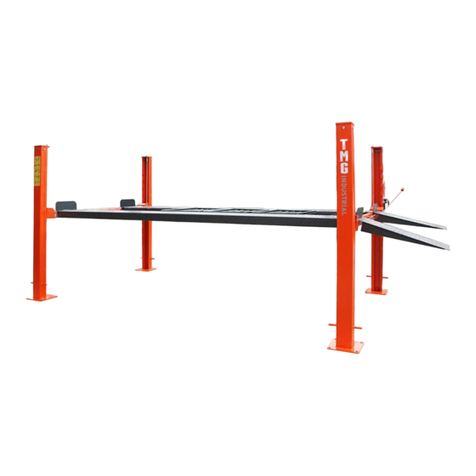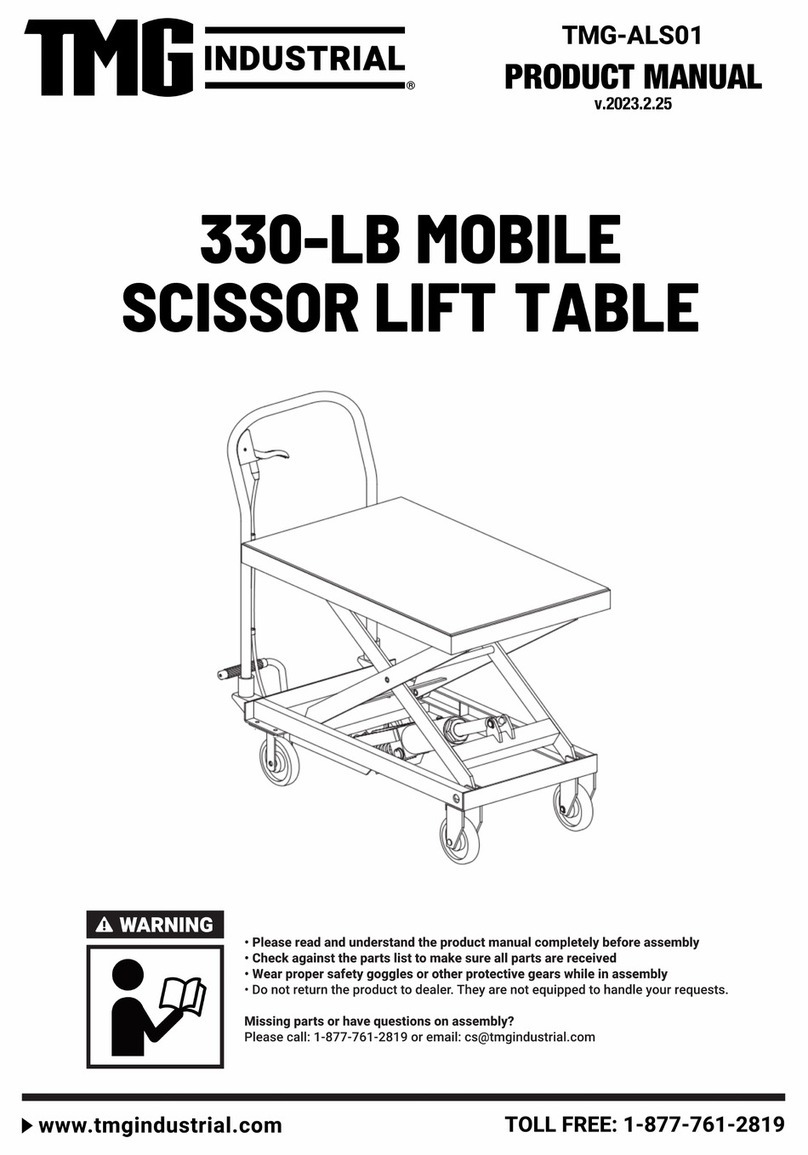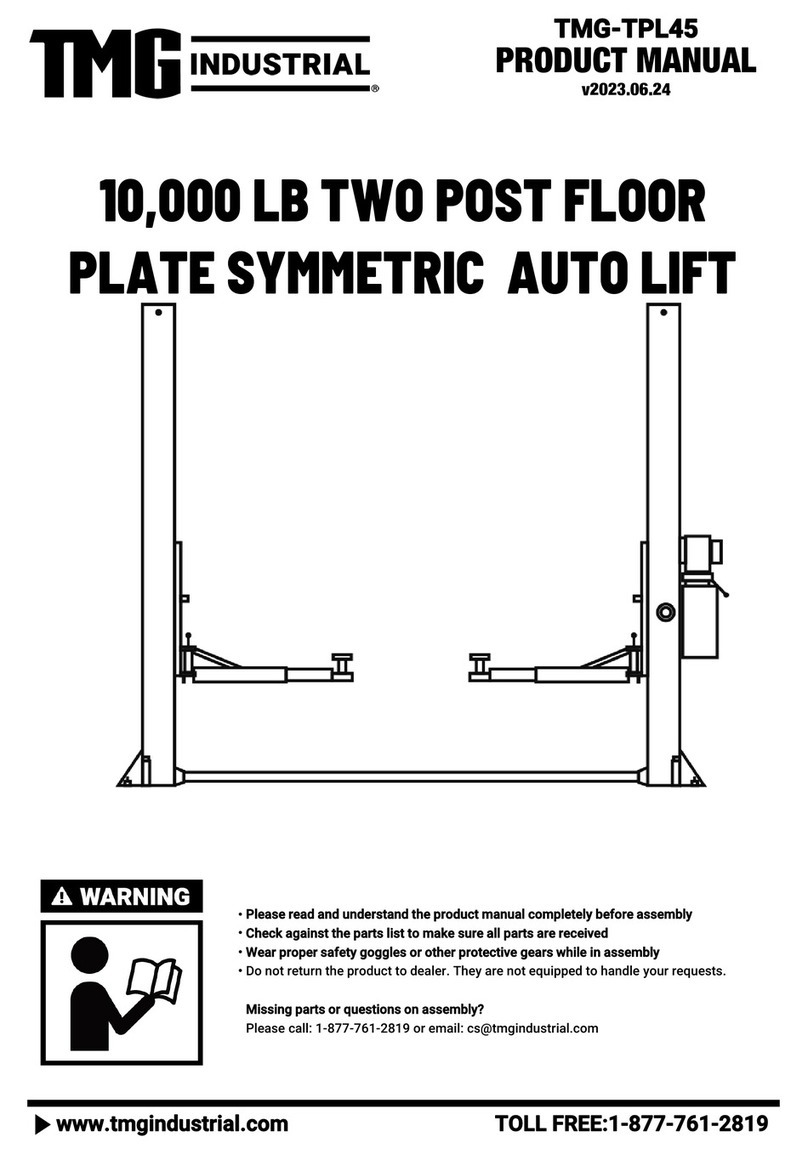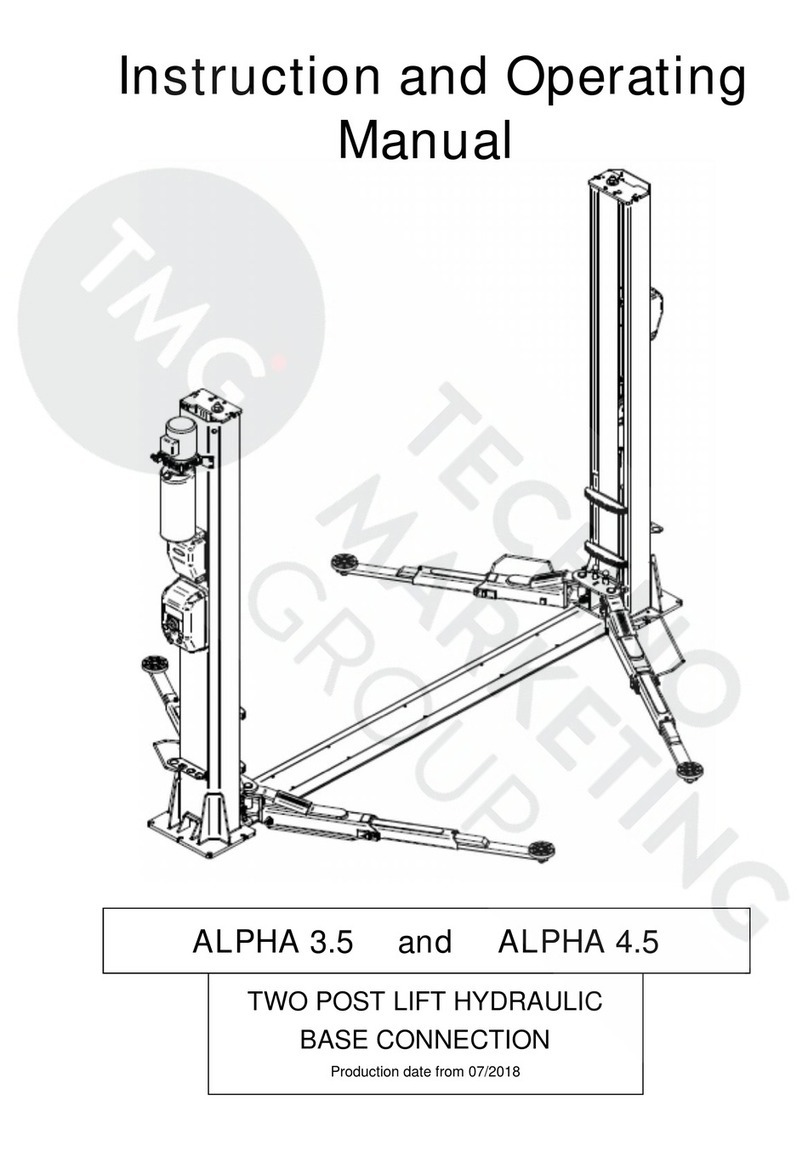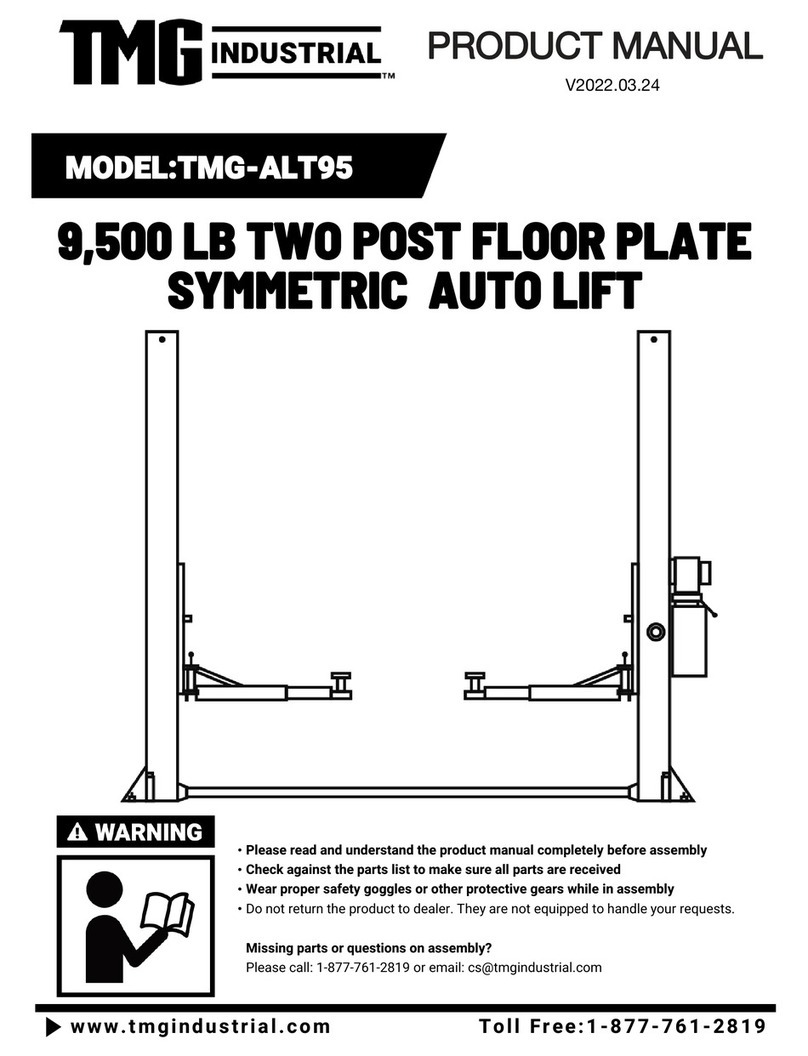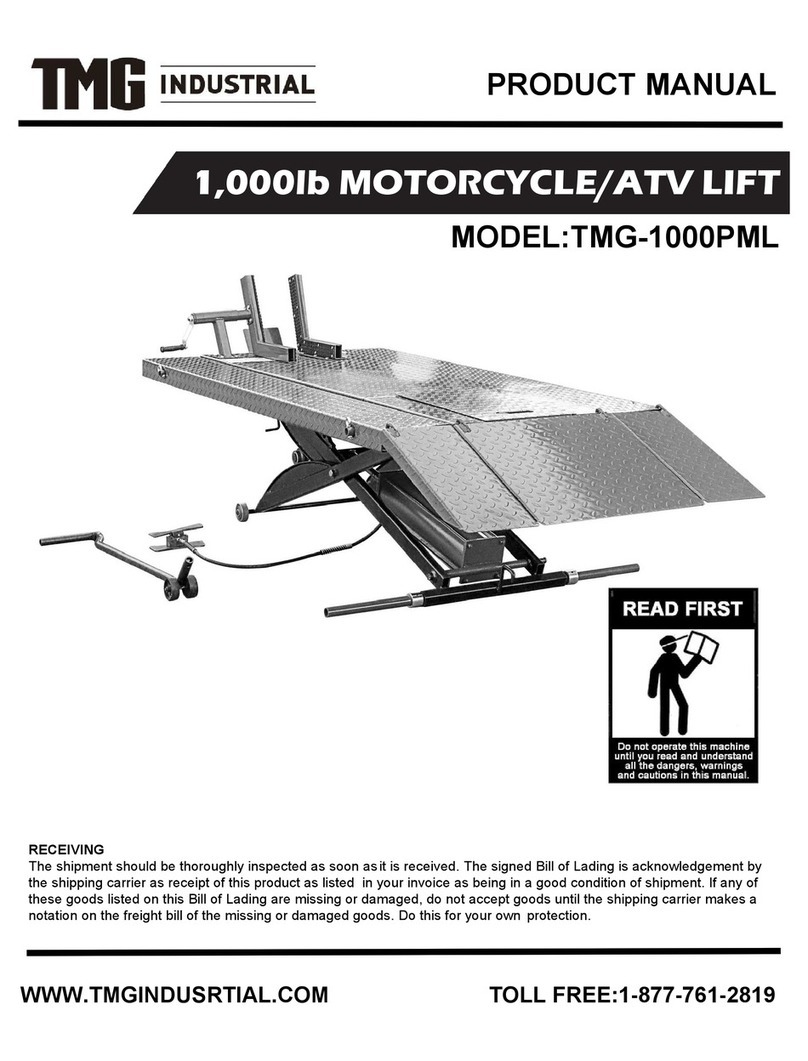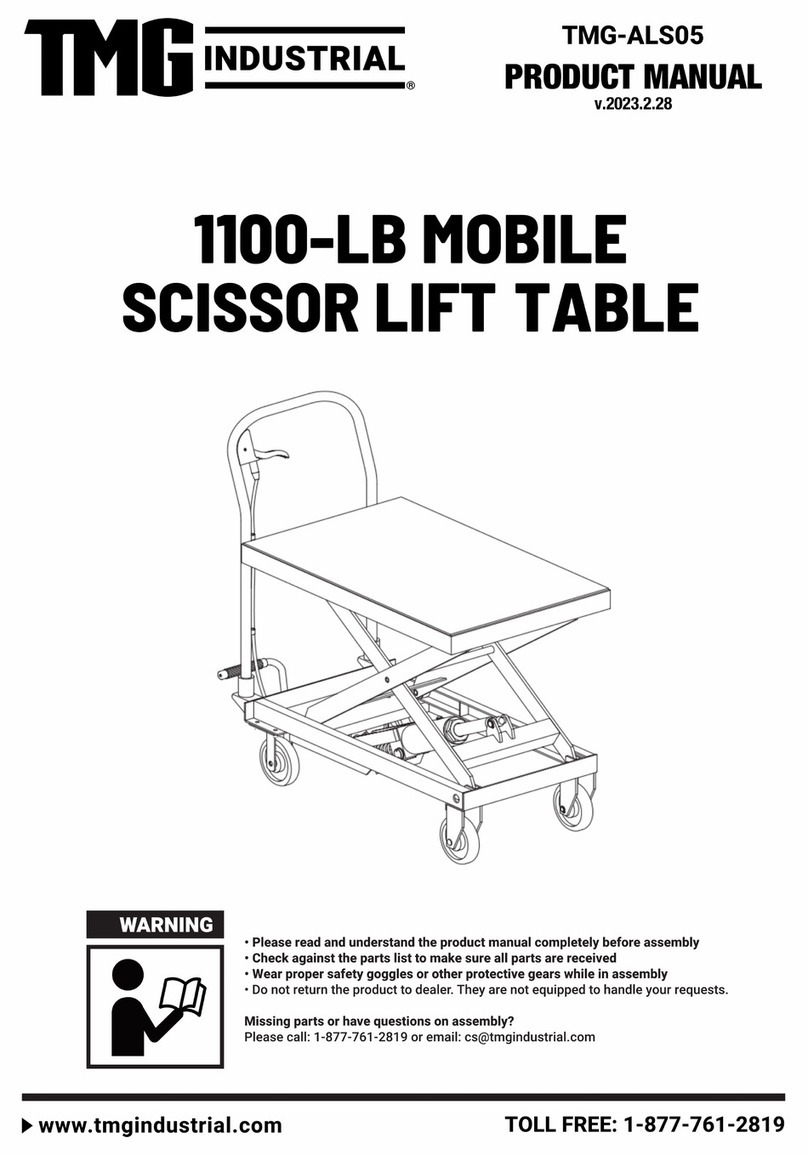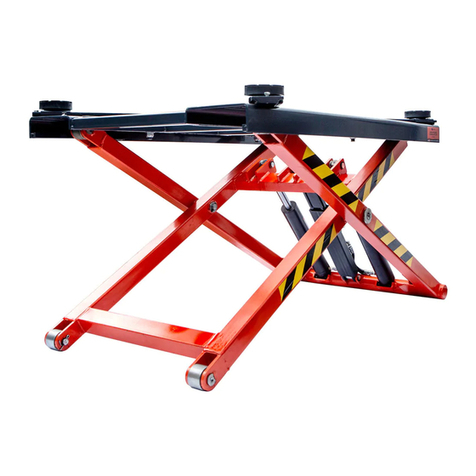
Safe Lift Operation Continued
All maintenance and repairs of the lift should be completed by following the manufacturer’s requirements. Lift repair parts
should meet or exceed OEM specifications. Repairs should only be completed by a qualified lift technician.
The vehicle manufacturer’s recommendations should be used for spotting and lifting the vehicle.
LIFT OPERATION SAFETY
It is important that you know the load limit. Be careful that you do not overload the lift . If you are unsure what the load
limit is, refer to this manual or contact the manufacturer.
The center of gravity should be followed closely to what the manufacturer recommends.
Always make sure you have proper overhead clearance. Additionally, check that attachments, (vehicle signs, pipes,
antennas, etc.) are not in the way.
Be sure that prior to the vehicle being raised the motorcycle is secured to the table.
Prior to being raised, make sure there is no one standing closer than six feet from the lift
After positioning the vehicle on the lift, make sure the ignition is off, overhead obstructions are cleared, and the
transmission is in neutral.
Always consider potential problems that might cause a vehicle to slip, i.e., heavy cargo, etc.
Pay attention when walking around a vehicle that is up on the lift.
DO NOT leave the controls while the lift is still in motion.
DO NOT stand directly in front of the vehicle or in the bay when vehicle is being loaded into position.
DO NOT Go near vehicle or attempt to work on the vehicle when being raised or lowered.
REMAIN CLEAR of lift when raising or lowering vehicle.
DO NOT rock the vehicle while on the lift or remove any heavy component from vehicle that may cause excessive weight
shift.
DO NOT lower the vehicle until people, materials, and tools are clear
ALWAYS ENSURE that the safeties are engaged before any attempt is made to work on or near vehicle.
Some vehicle maintenance and repair activities may cause the vehicle to shift. Follow the manufacturer’s guidelines when
performing these operations. The use of jack stands or alternate lift points may be required when completing some repairs.
READ AND UNDERSTAND all safety warning procedures before operating lift.
KEEP HANDS AND FEET CLEAR. Remove hands and feet from any moving parts. Keep feet clear of lift when lowering.
Avoid pinch points.
ONLY TRAINED OPERATORS should operate this lift. All non-trained personnel should be kept away from work area.
Never let non-trained personnel come in contact with, or operate lift.
USE LIFT CORRECTLY. Use lift in the proper manner. Never use lifting adapters other than what is approved by the
manufacturer.
DO NOT override self-closing lift controls.
CLEAR AREA if vehicle is on danger of falling.
STAY ALERT. Watch what you are doing. Use common sense. Be aware.
CHECK FOR DAMAGED PARTS. Check for alignment of moving parts, breakage of parts or any condition that may affect its
operation. Do not use lift if any component is broken or damaged.
NEVER remove safety related components from the lift. Do not use lift if safety related components are dam- aged or
missing.
When the lift is being lowered, make sure everyone is standing at least six feet away.
Be sure there are no jacks, tools, equipment, left under the lift before lowering.
Always lower the vehicle down slowly and smoothly.












